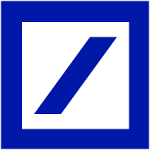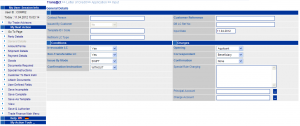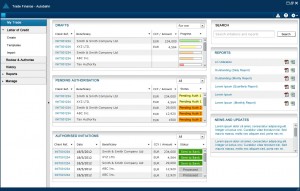 FinTech UX is becoming an ever increasing focus for me. In 2012, I led the redesign of Deutsche Bank’s Global Transaction Banking Trade Finance user experience.
FinTech UX is becoming an ever increasing focus for me. In 2012, I led the redesign of Deutsche Bank’s Global Transaction Banking Trade Finance user experience.
The images displayed in page are intentionally small. If you’d like to learn more, then please get in touch.
Topics
- Contextual Inquiry
- Personas
- User Journeys
- Concept development
- Concept Testing
- FinTech UX
- Agile sprint planning
Project description
As my first project with Deutsche Bank, it was important to familiarise myself with the application clients use each day.
 By way of expert review, I explored the current application interface to understand its context, its usage, and where further user research may be needed. This also gave me a good understanding of, from a best practise of view where areas for improvement would be required.
By way of expert review, I explored the current application interface to understand its context, its usage, and where further user research may be needed. This also gave me a good understanding of, from a best practise of view where areas for improvement would be required.
In parallel, my colleagues had previously unearthed a wealth of understanding from contextual inquiries conducted across the suite of FinTech applications in use by the bank. This, combined with my own evaluations proved instrumental in providing a focal point from which to start addressing the client’s usability and experience issues.
Workshops were held with UX team members, Product Managers and Subject Matter Experts whereby all findings and workflow understanding could be shared and translated into meaningful outputs. As a result, task flows were created for each primary use case which, in turn, facilitated the development of user personas.
 Combining my expert review with the outputs of the client interviews and the SME workshops meant simple concepts could be generated rapidly. Each concept aimed to address the primary issues highlighted, so to validate this I conducted 3 iterative rounds of concept testing to further improve the design ideas.
Combining my expert review with the outputs of the client interviews and the SME workshops meant simple concepts could be generated rapidly. Each concept aimed to address the primary issues highlighted, so to validate this I conducted 3 iterative rounds of concept testing to further improve the design ideas.
With validated concepts, clearly defined personas and a lengthy list of additional requirements and fixes, Agile sprint planning began. These planning sessions intended to help focus the team on addressing core framework deliverables tied together with the highest priority requirements. Beyond this phase, development work continued with the continual support of the UX team producing detailed designs and guidance that could be captured into patterns for later re-use.